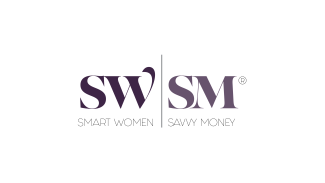
End of Year Things to Think About for Your Financial Future
It’s the end of the year—and of the 2010s. My, how time flies! (Whether you’re having fun or not...) With next year right around the corner, there are some strategies and activities you should know about and take advantage of. The past 10 years have been a profitable and strong economic environment compared to 2000–2010. With such a strong background, getting ready for the next few years is key. So here are some things you need to know about and do.
1. Ask: How Did You Handle Your Money?
This is a great time to see what you have been doing with your money. If you’re working with us, you’ll be able to see this data on our Personal Financial Dashboard (PFD). It breaks out the spending by categories, when you spent it and how much you spent your money. Your banks, and often credit card companies, will also provide you with a categorized listing. Take time to see how you handled your money and think about what changes you plan to make next year.
2. Made Any Lifestyle Changes?
If your circumstances or lifestyle have changed, you might need to update your employee benefits, your estate planning documents, or your beneficiaries. Beneficiaries are key, and often people forget to review their retirement and life insurance contracts to change their beneficiaries. Be sure to take a quick peek at these documents to make sure you’ve got the right folks in the right places.
3. Turning 50 Next Year?
If so, you need to be aware of some key strategic retirement savings options to consider. First, no matter which month you turn 50, you can ramp up your retirement savings by increasing your contribution. It’s called the catch-up provision, and it allows you to put away more than the basic contribution. For 401(k) and 403(b) accounts, catch-up contributions require you to make a separate application, so be sure to sign up for them. Just like basic contribution levels, the amount of the catch-up provision allowance changes along with updates to the tax code—so be sure to ask your financial planner or plan administrator about it to make sure you are contributing as much as you can.
4. Turning 70½ Next Year?
If you are, the IRS wants to hear from you. That’s because most people who have saved for retirement have at least some of their savings in accounts that are tax-deferred—such as a 401(k), 403(b), or traditional IRA account. The IRS allowed you to make contributions to these accounts without paying any tax on those dollars. But now they (and your state government) want their tax revenue! So, at 70½, you must begin taking what is called a Required Minimum Distribution (RMD) from your retirement accounts. There is a formula that is applied to calculate the amount of the RMD, and the percentage increases every year as you become one year older.
Be warned! If you don’t take your RMD out, there is a 50% tax penalty based on the value of what should have been paid out. For example, if your RMD amount was $10,000 and you didn’t take it out, then the tax penalty will be $5,000 plus your regular income taxes on that $10,000 distribution. YIKES! You do have the option to defer taking the RMD once—the first year you turn 70½—but you must take it out by April 1st of the following year. And, of course, you also need to take that year’s RMD before the end of that year to avoid the 50% penalty.
5. Want to Give Back?
Since the 2018 Tax Cut and Jobs Act, many nonprofits have been negatively impacted by lower charitable donations. Because the standard deduction went up so drastically in 2019 and will again in 2020, many people have not been able to make tax-deductible expenses in excess of the standard deduction. Without the option to get a tax deduction for their charitable donations, many people have felt they can’t afford to make a substantial donation to charity. But there are ways to navigate around that. Donor-Advised Funds are a simple and easy-breezy way to make donations to organizations that you are passionate about. It’s essentially like setting up a “Foundation” account, but without the red tape and regulatory oversight. To learn more about these types of accounts, visit Schwab’s Donor-Advised Fund web page. If you are taking an RMD, you can donate all or a portion of it to a charity. While you won’t be able to take a separate deduction for your contribution, the RMD funds will not be taxable. For example, if you need to take an RMD of $10,000 from your IRA—which would normally be taxable as income—you can donate the funds to one or more nonprofits. You will have met your RMD requirements, the distribution will not show up as taxable income for you, and the charity gets a generous donation!
We have lots more to share with you as we look ahead, but for now this is a good start. We will have more to come over the next year, so keep your eyes and ears open! Cheers, and happy holidays from all of us at Urban Wealth Management.

